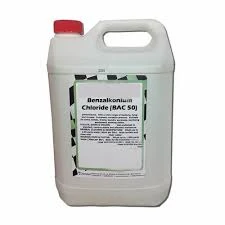Exploring the Benefits and Applications of Cationic Polyacrylamide in Water Treatment
The Role of Cationic Polyacrylamide (CPAM) in Water Treatment and Industrial Applications
Cationic polyacrylamide (CPAM) is a synthetic polymer that has found extensive applications in various industries, particularly in water treatment, paper manufacturing, and oil recovery. Its unique properties, including high molecular weight and cationic charge density, make it a versatile agent for enhancing the efficiency of various processes.
The Role of Cationic Polyacrylamide (CPAM) in Water Treatment and Industrial Applications
In addition to its flocculating properties, CPAM enhances the sedimentation process, allowing for faster settling of solids. This is particularly beneficial in large-scale operations where time efficiency is critical. The quick sedimentation also reduces the overall volume of sludge produced, thereby minimizing disposal costs and environmental impact. Moreover, CPAM is often preferred over anionic and non-ionic alternatives due to its superior performance in specific conditions, especially in acidic environments where other polymers may be less effective.
cationic pam

Beyond water treatment, CPAM is widely used in the paper industry. It serves as a retention aid, ensuring that fibrous materials remain in the paper slurry during production. This improves the overall yield and quality of the paper while reducing the amount of fibers lost during the manufacturing process. Additionally, the incorporation of CPAM can enhance the dry strength and wet strength of paper products, leading to improved performance in various applications.
In oil recovery, CPAM plays a crucial role as well. It is utilized in enhanced oil recovery operations, where it helps to improve the mobility of oil within reservoirs by altering the viscosity of the water used in flooding techniques. By promoting better displacement of the oil, CPAM contributes to increased extraction rates, which can significantly impact the economic viability of oil recovery projects.
While the advantages of cationic polyacrylamide are numerous, it is essential to handle it with care due to its potential ecological impacts. The use of CPAM should align with sustainable practices, ensuring that concentrations are optimized and that the polymer is effectively removed from wastewater before discharge. This is vital to prevent any adverse effects on aquatic ecosystems.
In conclusion, cationic polyacrylamide stands out as a crucial component in various industrial processes, particularly in water treatment and paper manufacturing. Its ability to act as a flocculant and enhance sedimentation makes it a valuable asset in achieving cleaner water and improving production efficiencies. As industries continue to seek sustainable and effective solutions, the role of CPAM is likely to grow, driving innovations and leading to more efficient practices across different sectors.
-
Water Treatment with Flocculant Water TreatmentNewsJun.12,2025
-
Polymaleic AnhydrideNewsJun.12,2025
-
Polyaspartic AcidNewsJun.12,2025
-
Enhance Industrial Processes with IsothiazolinonesNewsJun.12,2025
-
Enhance Industrial Processes with PBTCA SolutionsNewsJun.12,2025
-
Dodecyldimethylbenzylammonium Chloride SolutionsNewsJun.12,2025





